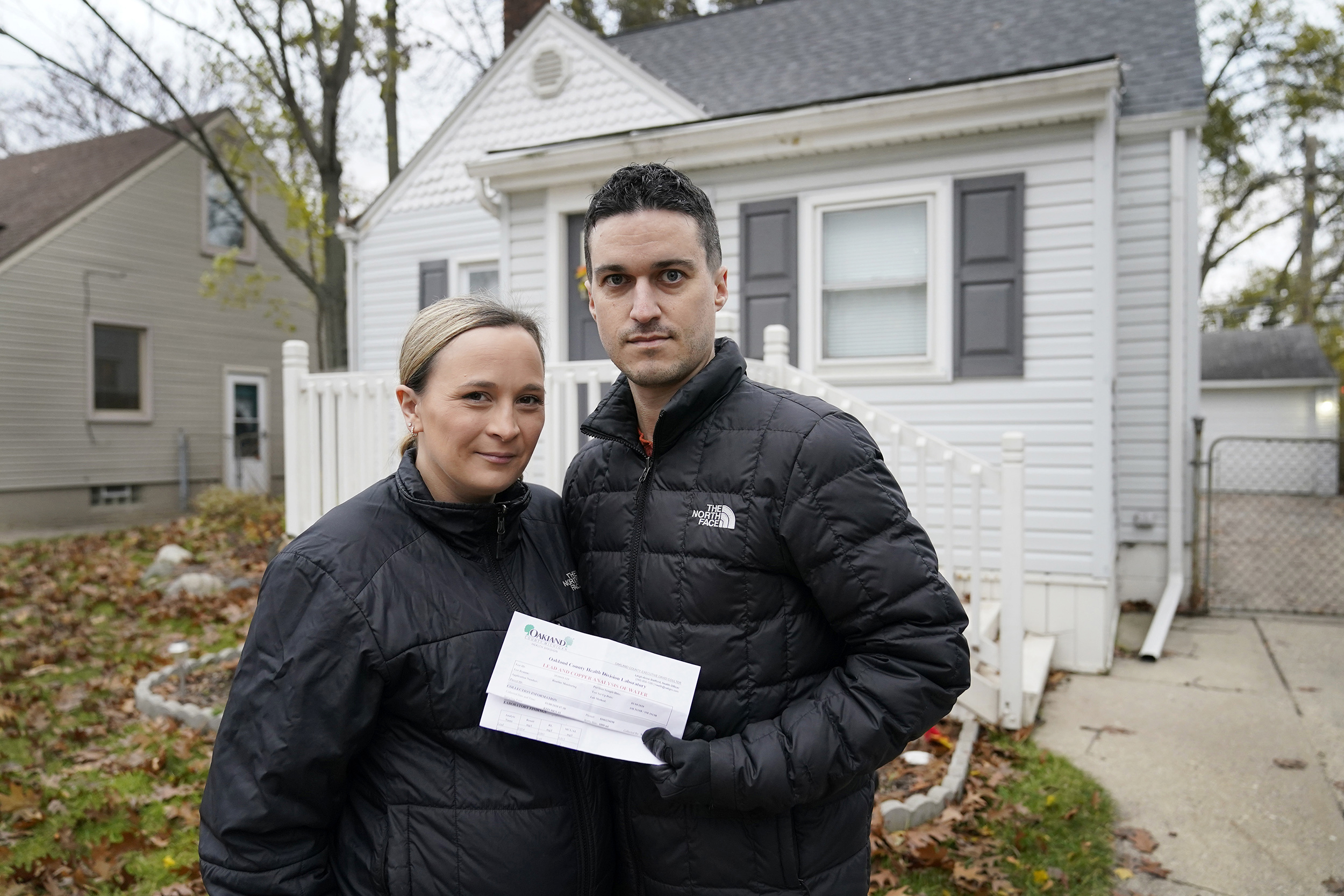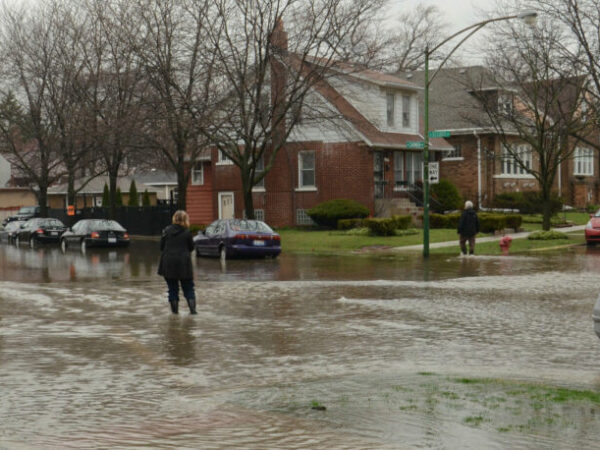
By Michael Phillis, Associated Press
ST. LOUIS (AP) — For years, testing of the tap water in an upscale Detroit suburb showed the city was in the clear. Then residents got a notice seemingly out of the blue: Their water could be contaminated with elevated levels of lead.
The city of Royal Oak had not made drastic changes to its water. It was simply using a new testing method that showed lead levels high enough that the utility was legally required to inform residents about the problem.
“We wanted to start a family, so hearing about lead in our drinking water was a little daunting,” said Nicole Obarto, who moved to Royal Oak with her husband in 2017.
In coming years, communities around the country could be in store for similarly unsettling news as U.S. officials consider adopting a more rigorous sampling method for lead in water. What happened in Royal Oak in 2019 offers a preview.
After the Flint water crisis, Michigan passed the country’s most aggressive lead measures, including more stringent testing of water. When using methods similar to what is currently required by the Environmental Protection Agency, testing of 170 systems in Michigan with lead lines resulted in 11 samples that exceeded the federal lead level requiring corrective action. When using another method like the one the EPA is reviewing and could soon mandate nationally, the figure doubled to 22.
With an even more thorough testing method Michigan adopted, it climbed to 31.
Other states are likely to see more elevated lead results as well under new testing; lead pipes still deliver water to millions of homes and businesses, a relic of the country’s outdated infrastructure.
“We should expect to see a very large number of utilities that are in compliance with the current rule no longer being in compliance,” said Daniel E. Giammar, an environmental engineering expert at Washington University in St. Louis.
Testing for lead involves turning on the tap and collecting a sample. Currently, federal regulations require sampling the first liter of water out of the tap. The new rule under review would leave the tap on longer to collect the fifth liter. Instead of water sitting near the faucet, the change is intended to test water that sits in the lead service lines that connect buildings to water mains.
The new approach is part of the Trump administration’s overhaul of a rule that regulates lead and copper in drinking water. Under the revamped rule, utilities with lead service lines would also have to confirm a building is served by lead lines before including it in sampling pools. When tests show lead levels at 10 parts per billion, the rule would require systems to address corrosion control, a treatment that helps prevent lead in pipes from seeping into the water. Water systems must take actions — such as replacing lead service lines — at 15 ppb.
The new rule was set to be implemented in early 2024, but the Biden administration delayed it to conduct a review after advocacy groups said it should require faster and more complete replacement of lead service lines.
The EPA plans to announce the results of its review by mid-December, and advocacy groups are hopeful the agency will keep the new lead sampling method intact — or make it even stricter. Environmental groups have been pushing the agency to require sampling of both the first and fifth liters, similar to the approach in Michigan.
Though data is limited, roughly 25% to 40% of water systems with lead service lines could breach the 10 ppb trigger level under the new rule requiring testing of the fifth liter and only buildings with lead lines, said David A. Cornwell, president of Cornwell Engineer Group, which provides consulting for water systems. A recent paper co-authored by Giammar used sampling data from 294 major water systems to estimate the new rule may push as many as 90% of systems above the trigger level.
How much of a change a city sees will depend on factors like the effectiveness of its corrosion control and the characteristics of its water, said Mark A. Edwards, a Virginia Tech water treatment researcher.
Still, some experts and environmental groups say many cities are not prepared for the change and should be taking more aggressive action in the meantime.
The Centers for Disease Control and Prevention says no amount of lead in drinking water is considered safe. Young children are especially vulnerable since exposure can slow their cognitive development and cause other health problems. Elin Warn Betanzo of Safe Water Engineering, a consulting firm, said water systems may have limited information on safety because of their sampling methods.
“They’ve used the absence of data to back up their statements that the water is safe,” she said.
To avoid alarming people under the new sampling method, utilities should inform customers about the measures they’re taking to minimize lead exposure, said Steve Via, director of government relations at the American Water Works Association, which counts water utilities as members. He said utilities have worked for years to reduce lead levels, but that government funding for the work has been limited.
The recently passed infrastructure bill will provide $15 billion to replace lead service lines and the reconciliation package pending in Congress includes billions more. Some experts say it won’t be enough to fully rid the country of lead pipes.
In Royal Oak, sampling between 2014 and 2017 came back at 4 ppb and 2 ppb — below the federal guideline of 15 ppb requiring action. When the city began testing both the first and fifth liters in 2019, levels shot up to 23 ppb.
In the first 24 hours after residents were alerted, a hotline to field questions got more than 300 calls, said Judy Davids, a community engagement specialist for Royal Oak. Normally, she said even four calls a day about a single topic is a red flag in the city of about 60,000.
The city distributed water filters and advised residents in buildings with lead service lines to flush their systems for at least five minutes. Work identifying and replacing lead pipes was accelerated, according to Aaron Filipski, the city’s director of public services and recreation.
After being notified of the risk, Obarto and her husband were relieved when blood tests didn’t indicate any problems from lead exposure. But testing in their home showed lead levels high enough to bump them up the list for new service lines.
Carol Mastroianni, another Royal Oak resident, worried about her twins, now in their 20s. She recalled encouraging them to drink water when they were young, thinking it was safe to do so from the tap.
“It’s like, ‘Oh gosh, is this going to counteract all of the good I thought I was doing?’” she said.
Still, Mastroianni said the new testing method is a positive step. Since the city began working to fix the problem, lead test results have dropped below the federal action level.
“When you know better, you can do better,” she said.
___
The Associated Press receives support from the Walton Family Foundation for coverage of water and environmental policy. The AP is solely responsible for all content. For all of AP’s environmental coverage, visit https://apnews.com/hub/environment
Catch more news on Great Lakes Now:
Q&A: New EPA Great Lakes administrator talks Benton Harbor, infrastructure, AOC cleanup
Program to help Benton Harbor residents with water bills
Featured image: Nicole and Simon Obarto, holding a lead and copper analysis of water from the Oakland County Health Division, stand outside their home in Royal Oak, Mich., on Thursday, Nov. 18, 2021. The couple had their water line tested for lead and the results were high enough to have the lead service line replaced. (AP Photo/Carlos Osorio)




